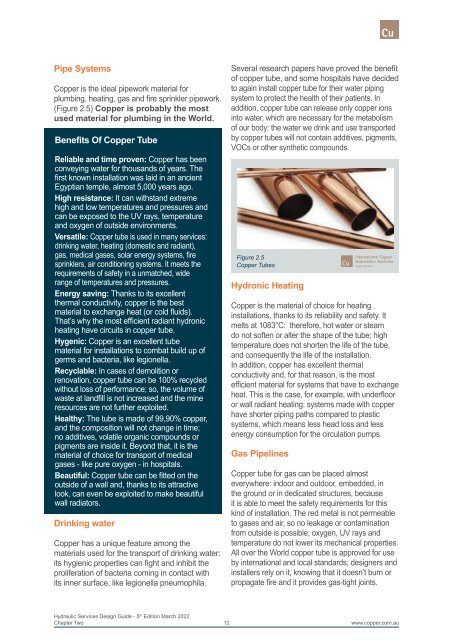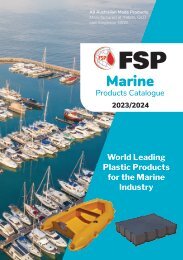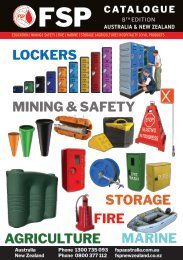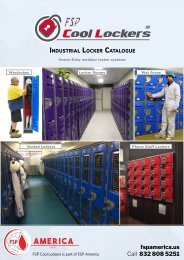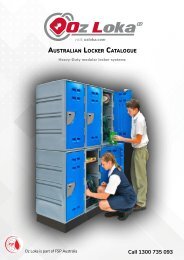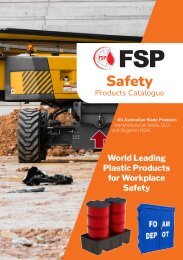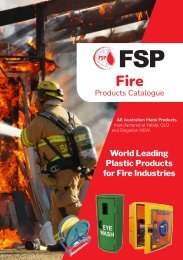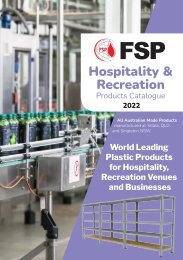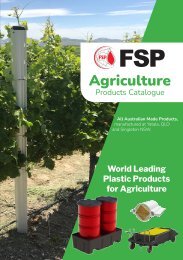Copper Alliance HSDG Australia
Create successful ePaper yourself
Turn your PDF publications into a flip-book with our unique Google optimized e-Paper software.
Pipe Systems<br />
<strong>Copper</strong> is the ideal pipework material for<br />
plumbing, heating, gas and fire sprinkler pipework.<br />
(Figure 2.5) <strong>Copper</strong> is probably the most<br />
used material for plumbing in the World.<br />
Benefits Of <strong>Copper</strong> Tube<br />
Reliable and time proven: <strong>Copper</strong> has been<br />
conveying water for thousands of years. The<br />
first known installation was laid in an ancient<br />
Egyptian temple, almost 5,000 years ago.<br />
High resistance: It can withstand extreme<br />
high and low temperatures and pressures and<br />
can be exposed to the UV rays, temperature<br />
and oxygen of outside environments.<br />
Versatile: <strong>Copper</strong> tube is used in many services:<br />
drinking water, heating (domestic and radiant),<br />
gas, medical gases, solar energy systems, fire<br />
sprinklers, air conditioning systems. It meets the<br />
requirements of safety in a unmatched, wide<br />
range of temperatures and pressures.<br />
Energy saving: Thanks to its excellent<br />
thermal conductivity, copper is the best<br />
material to exchange heat (or cold fluids).<br />
That’s why the most efficient radiant hydronic<br />
heating have circuits in copper tube.<br />
Hygenic: <strong>Copper</strong> is an excellent tube<br />
material for installations to combat build up of<br />
germs and bacteria, like legionella.<br />
Recyclable: In cases of demolition or<br />
renovation, copper tube can be 100% recycled<br />
without loss of performance; so, the volume of<br />
waste at landfill is not increased and the mine<br />
resources are not further exploited.<br />
Healthy: The tube is made of 99,90% copper,<br />
and the composition will not change in time;<br />
no additives, volatile organic compounds or<br />
pigments are inside it. Beyond that, it is the<br />
material of choice for transport of medical<br />
gases - like pure oxygen - in hospitals.<br />
Beautiful: <strong>Copper</strong> tube can be fitted on the<br />
outside of a wall and, thanks to its attractive<br />
look, can even be exploited to make beautiful<br />
wall radiators.<br />
Drinking water<br />
<strong>Copper</strong> has a unique feature among the<br />
materials used for the transport of drinking water:<br />
its hygienic properties can fight and inhibit the<br />
proliferation of bacteria coming in contact with<br />
its inner surface, like legionella pneumophila.<br />
Several research papers have proved the benefit<br />
of copper tube, and some hospitals have decided<br />
to again install copper tube for their water piping<br />
system to protect the health of their patients. In<br />
addition, copper tube can release only copper ions<br />
into water, which are necessary for the metabolism<br />
of our body: the water we drink and use transported<br />
by copper tubes will not contain additives, pigments,<br />
VOCs or other synthetic compounds.<br />
Figure 2.5<br />
<strong>Copper</strong> Tubes<br />
Hydronic Heating<br />
<strong>Copper</strong> is the material of choice for heating<br />
installations, thanks to its reliability and safety. It<br />
melts at 1083°C: therefore, hot water or steam<br />
do not soften or alter the shape of the tube; high<br />
temperature does not shorten the life of the tube,<br />
and consequently the life of the installation.<br />
In addition, copper has excellent thermal<br />
conductivity and, for that reason, is the most<br />
efficient material for systems that have to exchange<br />
heat. This is the case, for example, with underfloor<br />
or wall radiant heating: systems made with copper<br />
have shorter piping paths compared to plastic<br />
systems, which means less head loss and less<br />
energy consumption for the circulation pumps.<br />
Gas Pipelines<br />
<strong>Copper</strong> tube for gas can be placed almost<br />
everywhere: indoor and outdoor, embedded, in<br />
the ground or in dedicated structures, because<br />
it is able to meet the safety requirements for this<br />
kind of installation. The red metal is not permeable<br />
to gases and air, so no leakage or contamination<br />
from outside is possible; oxygen, UV rays and<br />
temperature do not lower its mechanical properties.<br />
All over the World copper tube is approved for use<br />
by international and local standards; designers and<br />
installers rely on it, knowing that it doesn’t burn or<br />
propagate fire and it provides gas-tight joints.<br />
Hydraulic Services Design Guide - 5 th Edition March 2022<br />
Chapter Two<br />
12<br />
www.copper.com.au


